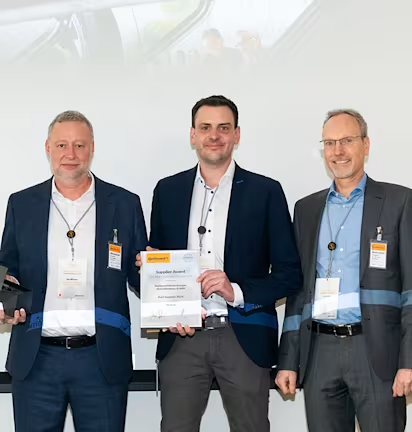
HF GROUP receives Continental Supplier Award

Latest innovation eCuring electrical curing

New shared HF GROUP corporate identity

Reduce your CO₂ emissions by up to 60%
HF GROUP AT A GLANCE
447
Sales in mln € in 2024
2,000
Employees
15
Sites
Pioneering sustainable solutions
in rubber and plastics processing
- ProductsProducts
Learn more about the complete portfolio of high-performance mixing, curing and automation solutions. From batch and continuous mixers to extruders, curing presses and safety systems – explore all of our products.
- ServicesServices
Learn more about services that go beyond industry standards and are focused on your success for example through expert support, upgrades, genuine OEM parts and testing at the HF Technical Centre.
- Digital SolutionsDigital Solutions
Learn more about digital solutions that create measurable value and drive innovation beyond our machines, such as HF Xplore® for real-time machine insights and reduced downtime, and MyMixingRoom® as your 24/7 customer portal for documentation, inspection reports, spare parts and service management.
- SystemsSystems
Learn more about HF customised mixing room and pyrolsysis systems. We support you from the early phase of your project in the brown or green field to jointly develop the solution for your applications.
- Sustainable SolutionsSustainable Solutions
Learn more about sustainable solutions in rubber and plastics processing reducing your CO₂ emissions by up to 60% for example with electrical curing, TANDEM mixers 2.0 and Smart Final Mix as a Service.
Meet us in person
Save the Dates
- Mar2026
- Apr2026
HF GROUP News
Stay up to date with the latest news and updates from the HF GROUP including product updates, the latest innovations, and organisational news.
- HF People & Places
Award ceremony for the 2024/2025 Special Trainee Award
Read post - HF People & Places
HF GROUP welcomes new partner in Türkiye
Read post - HF Environment, Social & GovernanceHF Know-how
Reduce the CO₂ consumption
Read post - HF People & Places
Global Sales Meeting 2025
Read post - HF Highlights
HF receives Continental Supplier Award
Read post - HF People & Places
Strong commitment in India through full takeover of an established Subsidiary
Read post - HF People & Places
51 Participants at the mixing seminar in Freudenberg (Germany)
Read post - HF HighlightsHF Know-how
HF receives the Tire Technology International Supplier Award
Read post - HF Highlights
HF MIXING GROUP received the supplier award 2021 presented by Michelin
Read post
Secure a knowledge advantage!
Newsletter registration
With the global corporate newsletter, you will receive exciting news once a month or quarter. Sign-up now and stay up to date with information about next event participations, organizational news and HF latest innovations.